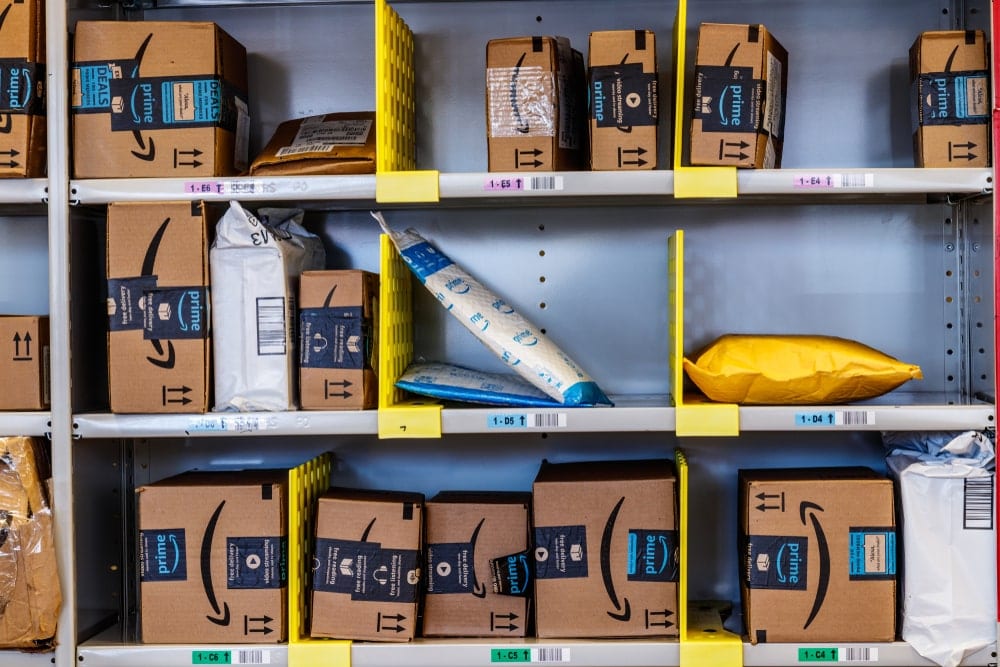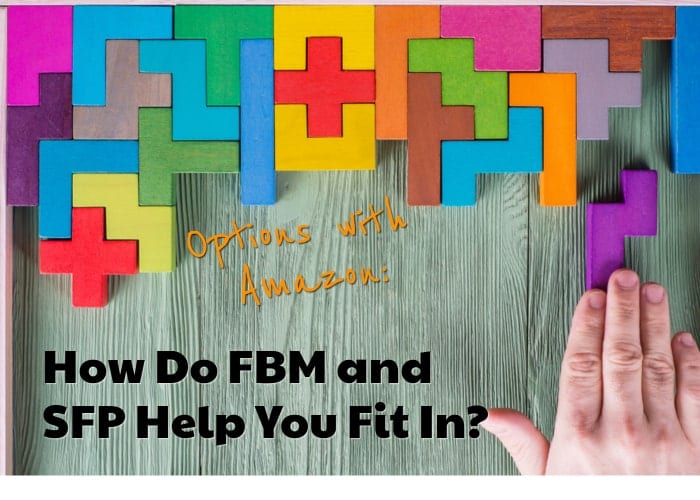Where Do FBM and SFP Fit Into the Amazon Order Fulfillment Ecosystem?
Amazon today is a very different business to the online bookstore founded by CEO Jeff Bezos back in 1994. From that relatively small digital niche, the Washington-based company has grown to dominate online retail.
The company achieved revenue of almost $233 billion in 2018, a significant proportion of which is attributed to more than one million third-party resellers. These entities take advantage of Amazon's platform to sell and distribute their products more widely than they could on an independent site. (They can also be taken advantage of, as we'll cover below.)
Despite the best efforts of big box retailers and various eCommerce competitors, it's now a fact of life that Amazon has grown large enough to dominate the online shopping experience.

Although the likes of Walmart and Target are making a fight of it, sellers still face an inconvenient truth: to access a significant portion of online shoppers, they probably have to be present on Amazon, preferably on its accompanying Prime program.
Fulfillment by Amazon (FBA) is now a well-known option for sellers pushing their products through an eCommerce giant. However, as we've highlighted in recent articles, FBA comes with numerous downsides, from unjustifiably high costs to the fact that it relinquishes far too much control to Bezos and co.
It comes as no surprise, then, that sellers are eager to find a way onto Amazon that maintains some level of autonomy over key aspects of fulfillment like data management and inventory control.
For many, that balance is found in the valuable Fulfillment By Merchant (FBM) option, alongside a more recent program that goes by the acronym SFP, or Seller Fulfilled Prime. In this article, we'll explore both of these options and explain why they could work for your business.

Amazon Order Fulfillment: Introducing FBM
Even if you've heard the term before, it's worth offering a little background on Amazon's Fulfillment by Merchant option to better understand how it relates to Seller Fulfilled Prime.
FBM offers a route to access the ecosystem without accepting the uncompromising buying practices of Amazon's first-party fulfillment provision or the often astronomical operating costs of Fulfillment By Amazon (FBA).
A significant advantage of FBM is the ability to build volume and obtain shipping discounts on other channels, such as the company website and social media outposts, all while the Amazon side of the business is scaled. Optimizing these alternative channels gives retailers not just a fall back plan if Amazon order fulfillment becomes unprofitable or too controlling, it also expands the incentive to accelerate direct-to-consumer (DTC) initiatives and scale other profitable sales channels.
Where FBA lures retailers into the Amazon environment with attractive claims and early growth, it can easily lead to getting stuck in the clutches of an eCommerce giant with limited interest in individual retailers.
FBM means adding flexibility to the fulfillment process and catalyzing the build-out of a more diverse, sustainable online brand.
Furthermore, with the right fulfillment partner and a successful track record of sales, FBM products can qualify for Amazon's Prime listing via Seller Fulfilled Prime. We'll take a look at what this means for growing retailers in the next section.
Leveraging SFP for Your Business
Following the program's introduction back in 2015, SFP has slowly grown in prominence as a route to access Amazon’s Prime members. According to Statista, the number of memberships stood at 101 million in the United States alone as 2018 drew to a close, making Prime the single most important retail channel in North America at this time. Add in the fact that many families and households share Prime membership plans across multiple users and you have a vast consumer field in this one place.
Seller Fulfilled Prime gives qualified sellers the ability to add the "Prime-eligible" tag to their products and ship items directly to customers from a warehouse of their choice. This adds much more flexibility to crucial aspects of the order process, from picking and packaging items to the all-important delivery stage.
For sellers with limited distribution ability or experience in the field, a dedicated third-party logistics (3PL) provider can also be brought into the process. This solution takes all the benefits of an established fulfillment partner and plugs them into the Amazon ecosystem.
In terms of visibility, sellers add the Amazon Prime badge to their product listings and ship directly to customers with the option of two-day shipping. As with Fulfillment By Amazon option, SFP positions the seller to get in front of more potential customers by appearing in high-value areas of eCommerce "real estate", such as featured provider and preferred purchase boxes.
Listings without Prime tend to suffer from lower positioning and have limited visibility when compared to Prime-qualified sellers, making them less appealing to consumers who pay specifically for the experience and advantages of Amazon Prime.
Where Do Companies Like Capacity Fit Into the Equation?
As a dedicated third-party fulfillment partner to global brands, Capacity has experience with almost every form of retail imaginable. As you might expect, Amazon is an increasingly large part of our world and we integrate with their ecosystem in many different ways, subject to the individual requirements of our clients.
While we understand the immediate appeal of FBA, the many hidden pitfalls that we've identified make it hard for us to recommend the program for any brand that wants to retain control of key fulfillment areas.
Thankfully, the emergence of FBM and SFP gives partners like Capacity more room to do what we do best, connect your brand to customers, without your company having to give up quite so much. There will still be areas of concern with Amazon's practices, but the ability to fine-tune your fulfillment solution and deliver a more refined order experience for customers keeps the most important elements under your control.
In short, SFP gives the brands that we serve the option to capitalize on the quick sales and instant exposure of an enormous platform like Amazon, while minimizing the risks of having the eCommerce giant control every aspect of your supply chain.
Jeff Bezos recently commented on the success of third-party sellers on his platform in glowing terms. While he was right to highlight the importance of these players in his ecosystem, it's also important to separate out the different options available for joining the party.
For external brands, the difference between the FBA and SFP/FBM models is so substantial that they should never be lumped together. We always encourage the retailers we meet to examine every aspect of what they're giving up before jumping into the deep end of Amazon's fulfillment.
When combined with Seller-Fulfilled Prime qualification, Fulfillment by Merchant usually looks like a much more attractive proposition after third-party sellers complete this due-diligence.
If your brand sees value in this model but doesn't know quite where to start, Capacity's team of fulfillment experts is on hand to help.
We have extensive experience working with businesses in traditional retail sectors like consumer packaged goods and embrace the opportunity to help these brands translate household name recognition to eCommerce success.
Contact us today to discuss an online retail and fulfillment strategy that will work for your business.
